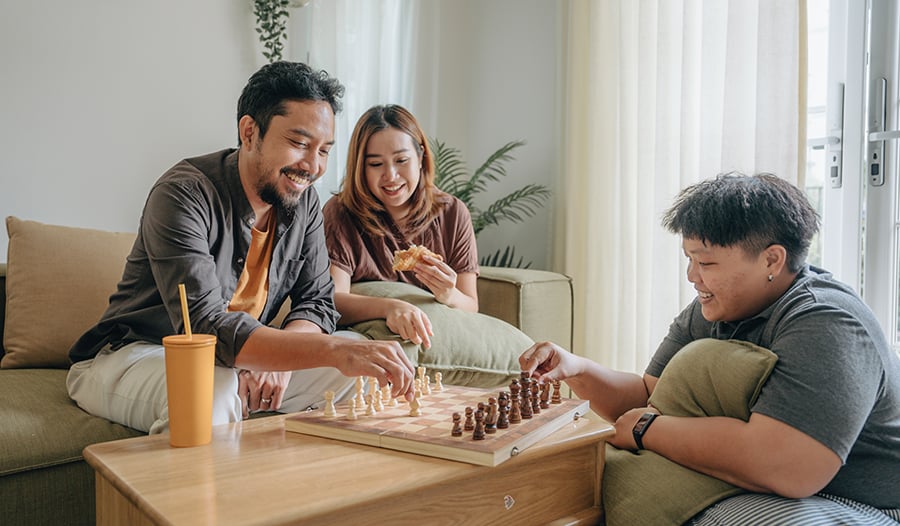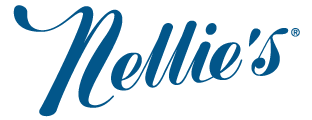6 Ways To Boost Neuroplasticity + Keep Your Brain Young

Leading a mentally and physically active lifestyle is a cornerstone of maintaining brain health and optimizing cognitive performance. This foundation is built on a fascinating ability of the brain: neuroplasticity, or brain plasticity.
What Is Neuroplasticity?
Neuroplasticity is the brain’s inherent capacity to adapt and reorganize itself in response to life experiences, enabling learning and skill development through practice.
Neuroplasticity operates on two levels:
- Functional Plasticity: Modifies how existing neurons and synapses function by triggering molecular-level changes.
- Structural Plasticity: Alters the brain’s structure through changes in neuronal connections, glial cells, and cellular morphology.
Although neuroplasticity tends to decline with age, explaining why children are such fast learners compared to adults, our brains retain substantial adaptive potential throughout life. Engaging in activities that stimulate this capacity promotes both functional and structural brain changes, ultimately boosting cognitive performance.
Let’s explore how we can leverage this potential to enhance brain function.
Activities To Boost Neuroplasticity
Learning as a Gateway to Neuroplasticity
Learning inherently exercises neuroplasticity by modifying neural circuits that encode new knowledge or skills. With continued practice, these changes can evolve from functional adjustments to structural transformations. For example:
Music Training
Playing an instrument stimulates cognitive processes through sensory and motor training. Professional musicians exhibit increased gray matter in motor and auditory brain regions.1 Studies even show that short-term training, such as learning a simple piano sequence, can induce functional and structural changes in the brain.2–4 Neuroplasticity promoted by musical training can contribute to the enhancement of cognitive abilities like memory and speech processing.5,6
Motor Skills
Activities like juggling foster brain adaptations associated with visual motion processing and memory.7 Even older adults, who show slightly smaller structural changes than younger individuals, experience improvements in areas like the hippocampus, critical for memory and learning.8
Gaming as a Cognitive Booster
Video games challenge both motor and cognitive skills. Studies reveal that playing games for just two months increases gray matter in areas related to spatial navigation, working memory, and planning.9 Similarly, other studies show that attention, perception, and executive control tasks can be improved after only 10 to 20 hours of video game playing.10–12
Bilingualism and Brain Structure
Learning a new language—even later in life—enhances gray matter density, cortical thickness, and white matter integrity.13 Adding a motor element, such as sign language, amplifies these effects by engaging visual and spatial processing regions.14
The Role of Sleep in Learning and Neuroplasticity
Sleep is essential for consolidating learning and memory.15 During sleep, processes like long-term potentiation (LTP) and synapse formation optimize brain plasticity.16,17 Research shows that memory recall improves significantly when learning is followed by sleep, particularly when sleep occurs shortly after acquiring new information.18–20 Poor sleep, however, disrupts these processes and is associated with reduced gray matter and hippocampal volume.21–26
Exercise: A Catalyst for Brain Adaptation
Regular physical activity benefits the brain on multiple levels:
- Functional Changes: Exercise enhances neurotransmitter levels, synaptic communication, and cortical activity.27–30
- Structural Changes: Increased gray and white matter volumes, particularly in areas like the hippocampus, offset normal age-related brain atrophy and support memory.31–35
Even a simple 40-minute walk can spark neuroplasticity, with cumulative effects improving hippocampal structure and memory over time.36
Stress Reduction Through Meditation
Constant stress undermines neuroplasticity, while practices like mindfulness meditation counteract these effects by reducing stress hormone levels.37–40 Studies link meditation to structural brain changes in regions supporting attention, emotion regulation, and cognition, helping the brain recover from stress and promote plasticity.41,42
Support Brain Health Through Nutrition
Nutrition can influence a number of cellular processes and structures essential for the viability of neuroplasticity mechanisms, including cellular metabolism and mitochondrial health. Natural nootropics are dietary ingredients and other compounds available in nature, such as vitamins, minerals, amino acids, herbs, and mushrooms that are studied to support and protect the functional and structural status of the brain. Examples of popular nootropics are: L-theanine, Citocoline, Magnesium, and Lion’s Mane.
Fostering Brain Adaptation
The key to harnessing neuroplasticity lies in engaging the brain through diverse, novel, and stimulating activities. Engaging the brain means more than simply doing something; focus and repetition are crucial for neuroplasticity. Treat your brain like a muscle: challenge it, nourish it, and allow it time to rest and recover. From learning new skills to sleeping well, every effort counts toward a healthier, more adaptable brain.
References:
- Gaser C, Schlaug G. Gray matter differences between musicians and nonmusicians. Ann N Y Acad Sci. 2003;999:514-517. https://doi.org/10.1196/annals.1284.062
- Lappe C, Herholz SC, Trainor LJ, Pantev C. Cortical plasticity induced by short-term unimodal and multimodal musical training. J Neurosci. 2008;28(39):9632-9639. https://www.jneurosci.org/content/28/39/9632
- Pantev C, Lappe C, Herholz SC, Trainor L. Auditory-somatosensory integration and cortical plasticity in musical training. Ann N Y Acad Sci. 2009;1169:143-150. https://nyaspubs.onlinelibrary.wiley.com/doi/full/10.1111/j.1749-6632.2009.04556.x
- Li Q, Gong X, Lu H, Wang Y, Li C. Musical training induces functional and structural auditory-motor network plasticity in young adults. Hum Brain Mapp. 2018;39(5):2098-2110. http://pubmed.ncbi.nlm.nih.gov/29400420/
- Guo X, Li Y, Li X, et al. Musical instrument training improves verbal memory and neural efficiency in older adults. Hum Brain Mapp. 2021;42(5):1359-1375. https://onlinelibrary.wiley.com/doi/full/10.1002/hbm.25298
- Fleming D, Wilson S, Bidelman GM. Effects of short-term musical training on neural processing of speech-in-noise in older adults. Brain Cogn. 2019;136:103592. https://doi.org/10.1016/j.bandc.2019.103592
- Draganski B, Gaser C, Busch V, Schuierer G, Bogdahn U, May A. Neuroplasticity: changes in grey matter induced by training. Nature. 2004;427(6972):311-312. https://www.nature.com/articles/427311a
- Mogenson GJ, Jones DL, Yim CY. From motivation to action: functional interface between the limbic system and the motor system. Prog Neurobiol. 1980;14(2-3):69-97. https://pubmed.ncbi.nlm.nih.gov/6999537/
- Kühn S, Gleich T, Lorenz RC, Lindenberger U, Gallinat J. Playing Super Mario induces structural brain plasticity. Mol Psychiatry. 2014;19(2):265-271. https://www.nature.com/articles/mp2013120
- Green CS, Bavelier D. Action video game modifies visual selective attention. Nature. 2003;423(6939):534-537. https://www.nature.com/articles/nature01647
- Green CS, Bavelier D. Enumeration vs. multiple object tracking: action video game players. Cognition. 2006;101(1):217-245. https://pubmed.ncbi.nlm.nih.gov/16359652/
- Basak C, Boot WR, Voss MW, Kramer AF. Real-time strategy video game attenuates cognitive decline in older adults. Psychol Aging. 2008;23(4):765-777. https://pubmed.ncbi.nlm.nih.gov/19140648/
- Li P, Legault J, Litcofsky KA. Neuroplasticity as a function of second language learning: anatomical and functional signatures. Cortex. 2014;58:301-324. https://pubmed.ncbi.nlm.nih.gov/24996640/
- Banaszkiewicz A, Bola Ł, Matuszewski J, Szwed M, Rutkowski P, Ganc M. Brain reorganization in hearing late learners of sign language. Hum Brain Mapp. 2021;42(2):384-397. https://pubmed.ncbi.nlm.nih.gov/33098616/
- Rasch B, Born J. About sleep's role in memory. Physiol Rev. 2013;93(2):681-766. https://journals.physiology.org/doi/full/10.1152/physrev.00032.2012
- Huber R, Ghilardi MF, Massimini M, Tononi G. Local sleep and learning. Nature. 2004;430(6995):78-81. https://www.nature.com/articles/nature02663
- Cirelli C, Tononi G. Effects of sleep and wakefulness on brain gene expression. Neuron. 2004;41(1):35-43. https://pubmed.ncbi.nlm.nih.gov/14715133/
- Talamini LM, Nieuwenhuis IL, Takashima A, Jensen O. Sleep directly following learning benefits memory retention. Learn Mem. 2008;15(5):233-237. https://pubmed.ncbi.nlm.nih.gov/18391183/
- Gais S, Lucas B, Born J. Sleep after learning aids memory recall. Learn Mem. 2006;13(3):259-262. https://learnmem.cshlp.org/content/13/3/259.full
- Payne JD, Tucker MA, Ellenbogen JM, Wamsley EJ, Walker MP, Schacter DL, Stickgold R. Sleep's role in memory for emotionally valenced information. PLoS One. 2012;7(4):e33079. https://journals.plos.org/plosone/article?id=10.1371/journal.pone.0033079
- Backhaus J, Junghanns K, Born J, Hohaus K, Faasch F, Hohagen F. Impaired memory consolidation during sleep in patients with primary insomnia. Biol Psychiatry. 2006;60(12):1324-1330. https://pubmed.ncbi.nlm.nih.gov/16876140/
- Nissen C, Kloepfer C, Nofzinger EA, Feige B, Voderholzer U, Riemann D. Sleep-related memory consolidation in primary insomnia. J Sleep Res. 2011;20(1 Pt 2):129-136. https://pubmed.ncbi.nlm.nih.gov/20673291/
- Joo EY, Kim H, Suh S, Hong SB. Gray matter deficits in patients with chronic primary insomnia. Sleep. 2013;36(7):999-1007. https://pmc.ncbi.nlm.nih.gov/articles/PMC4098804/
- Altena E, Vrenken H, Van Der Werf YD, van den Heuvel OA, Van Someren EJ. Reduced gray matter in the fronto-parietal network of patients with chronic insomnia. Biol Psychiatry. 2010;67(2):182-185. https://pubmed.ncbi.nlm.nih.gov/19782344/
- Riemann D, Voderholzer U, Spiegelhalder K, et al. Insomnia and depression: could "hippocampal vulnerability" be a common mechanism? Sleep. 2007;30(8):955-958. https://academic.oup.com/sleep/article-abstract/30/8/955/2696802?redirectedFrom=fulltext
- Joo EY, Lee H, Kim H, Hong SB. Hippocampal vulnerability and its underlying mechanism in patients with chronic primary insomnia. Sleep. 2014;37(7):1189-1196. https://pubmed.ncbi.nlm.nih.gov/25061247/
- Maddock RJ, Casazza GA, Buonocore MH, Tanase C. Exercise-induced changes in anterior cingulate cortex glutamate and GABA levels. J Neurosci. 2016;36(8):2449-2457. https://www.jneurosci.org/content/36/8/2449
- Church DD, Hoffman JR, Mangine GT, et al. Comparison of high-intensity vs. high-volume resistance training on the BDNF response to exercise. J Appl Physiol (1985). 2016;121(1):123-128. https://pubmed.ncbi.nlm.nih.gov/27231312/
- Vaughan S, Wallis M, Polit D, et al. The effects of multimodal exercise on cognitive and physical functioning and brain-derived neurotrophic factor in older women: a randomised controlled trial. Age Ageing. 2014;43(5):623-629. https://pubmed.ncbi.nlm.nih.gov/24554791/
- Moore D, Loprinzi PD. Putative mechanisms of action for the exercise-memory function link. Eur J Neurosci. 2021;54(10):6960-6971. https://pubmed.ncbi.nlm.nih.gov/32236992/
- Kleemeyer MM, Kühn S, Prindle J, et al. Physical fitness is associated with microstructure of the hippocampus and orbitofrontal cortex in older adults. Neuroimage. 2016;131:155-161. https://pubmed.ncbi.nlm.nih.gov/26584869/
- den Ouden L, van der Heijden S, Van Deursen D, et al. Aerobic exercise and hippocampal integrity in older adults. Brain Plast. 2018;4(2):211-216. https://pubmed.ncbi.nlm.nih.gov/30598871/
- Voss MW, Prakash RS, Erickson KI, et al. Exercise-induced brain plasticity: what is the evidence? Trends Cogn Sci. 2013;17(10):525-544. https://pubmed.ncbi.nlm.nih.gov/23123199/
- Wittfeld K, Jochem C, Dörr M, et al. Cardiorespiratory fitness and gray matter volume in the temporal, frontal, and cerebellar regions in the general population. Mayo Clin Proc. 2020;95(1):44-56. https://pubmed.ncbi.nlm.nih.gov/31902428/
- Thomas AG, Dennis A, Rawlings NB, et al. The effects of aerobic activity on brain structure. Front Psychol. 2012;3:86. https://www.frontiersin.org/articles/10.3389/fpsyg.2012.00086/full
- Erickson KI, Voss MW, Prakash RS, et al. Exercise training increases size of hippocampus and improves memory. Proc Natl Acad Sci U S A. 2011;108(7):3017-3022. https://www.pnas.org/content/108/7/3017
- Lupien SJ, Juster RP, Raymond C, Marin MF. The effects of chronic stress on the human brain: from neurotoxicity, to vulnerability, to opportunity. Front Neuroendocrinol. 2018;49:91-105. https://doi.org/10.1016/j.yfrne.2018.02.001
- Radley J, Morilak D, Viau V, Campeau S. Chronic stress and brain plasticity: mechanisms underlying adaptive and maladaptive changes and functional consequences. Neurosci Biobehav Rev. 2015;58:79-91. https://doi.org/10.1016/j.neubiorev.2015.06.018
- Chiesa A, Serretti A. Mindfulness-based stress reduction for stress management in healthy people: a review and meta-analysis. J Altern Complement Med. 2009;15(5):593-600. https://www.liebertpub.com/doi/abs/10.1089/acm.2008.0495
- Creswell JD, Taren AA, Lindsay EK, et al. Alterations in resting-state functional connectivity link mindfulness meditation with reduced interleukin-6: a randomized controlled trial. Psychoneuroendocrinology. 2014;44:1-12. https://doi.org/10.1016/j.psyneuen.2014.02.007
- Fox KCR, Nijeboer S, Dixon ML, Floman JL, Ellamil M, Rumak SP. Is meditation associated with altered brain structure? A systematic review and meta-analysis of morphometric neuroimaging in meditation practitioners. Neurosci Biobehav Rev. 2014;43:48-73. https://pubmed.ncbi.nlm.nih.gov/24705269/
- Tang YY, Hölzel BK, Posner MI. The neuroscience of mindfulness meditation. Nat Rev Neurosci. 2015;16(4):213-225. https://www.nature.com/articles/nrn3916
DISCLAIMER:This Wellness Hub does not intend to provide diagnosis...
















































































 Table of Contents
Table of Contents
















